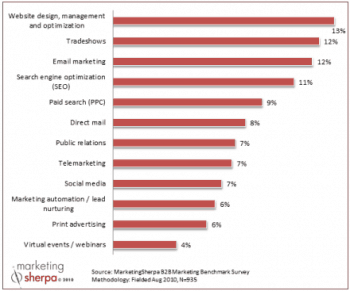Five Steps to Building an Effective Lead Nurturing Program
 There are five fundamental steps to building an effective and productive lead nurturing campaign. A solid lead nurturing program needs to consist of finding worthy leads by utilizing lead qualifying and scoring methods then segmenting leads based on their personal interests. It also involves developing a compelling content strategy, optimizing landing pages and tracking results. The more thought and planning put into developing a compelling lead nurturing program, the more likely it will secure new customers.
There are five fundamental steps to building an effective and productive lead nurturing campaign. A solid lead nurturing program needs to consist of finding worthy leads by utilizing lead qualifying and scoring methods then segmenting leads based on their personal interests. It also involves developing a compelling content strategy, optimizing landing pages and tracking results. The more thought and planning put into developing a compelling lead nurturing program, the more likely it will secure new customers.
Here are more details on those five factors and how they can help convert more leads into revenue.
1. Lead scoring
Leading scoring is a process that ranks each potential visitor based on their likelihood of purchasing a company’s product or service. It searches for clues in their online profile that coincide with their typical customer and then it ranks them on importance or relevance. A company can discover significant information on a lead simple by examining their browser history. Also consider using Lead Grading, a feature of Lead Liaison’s platform, to identify how well a prospect matches your ideal buyer profile.
2. List segmentation
After you have qualified each lead as being valuable, the next step is segmenting them into distinct groups. By using demographics and their personal interests to segment leads into designated categories, efforts can be targeted by group instead of on an individual basis. Use Lead Liaison’s Dynamic Target Lists to “set it and forget it”. Dynamic Target Lists enable marketers to establish list building rules that always run resulting in an always-updated list of targeted contacts.
3. Developing a content strategy
A content strategy is the key to the success of any lead nurturing program. A company must first determine what type of content you want to send and how frequently you should send it. Every piece of information sent needs to be relevant information and grab the reader’s attention. If the content fails to impress then the entire campaign fails.
4. Landing page optimization
The first page that a lead sees is a crucial element in whether or not they convert into a sale. Start by reviewing the intended customer flow to determine where each segmented lead will most likely end up. Then create a dynamic landing page designed to convert a lead into a sale.
5. Tracking results
There is no point in creating an effective lead nurturing campaign if a company is not able to track and review the results. Businesses need to know what works and what didn’t so they can plan future campaigns accordingly. An effective lead nurturing program has to evaluate each attempt and how easily it was able to convert leads into sales.
Following these five factors will help your company build an effective lead nurturing program. Your business will have the ability to tap into each potential customer, group them by interests, and then develop content that appeals to them. It will also direct them to a powerful landing page to seal the deal and track the results of each successful conversion.












